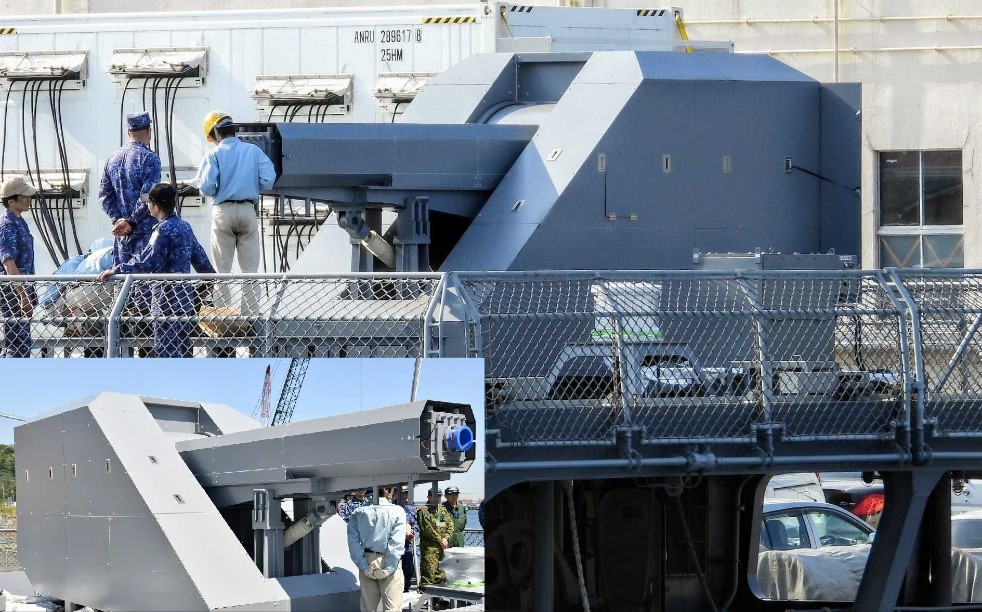Japan Unveils Railgun Installed on Naval Warship

On April 18, 2025, the Japan Maritime Self-Defense Force (JMSDF) revealed a striking image of a cutting-edge electromagnetic railgun mounted on the test vessel JS Asuka. This marked a major milestone in Japan’s futuristic weapons development, demonstrating a serious leap toward operational deployment of this advanced system at sea.
The Journey of Japan’s Railgun Development
Japan's railgun project has been in the works since 2016 under the Ministry of Defense’s Acquisition, Technology & Logistics Agency (ATLA). The program began as a research initiative called “Electromagnetic Acceleration Systems,” aiming to create a system capable of launching projectiles at a muzzle velocity of 2000 meters per second—over six times the speed of sound. A key performance goal was a barrel life of at least 120 shots without performance degradation.
Unlike conventional guns that rely on explosive propellants, railguns use magnetic fields powered by massive electric currents. This eliminates barrel damage caused by explosions but introduces new challenges like heat erosion and wear from the sliding contact between the projectile (armature) and the rails. Through years of research, ATLA engineers tested and refined materials, moving from pure copper rails to more durable composite blends. Their efforts paid off: the latest tests confirmed that after 120 firings, the railgun barrel remained fully functional.
Breakthrough: First Shipboard Railgun Firing
In October 2023, Japan conducted its first-ever ship-based railgun test, opening the door to practical naval deployment. With successful land trials behind them, ATLA moved forward with a new phase named “Research on Future Railgun,” running from FY2022 to FY2026. This new focus is not just about firing rounds but developing a complete gun system, which includes:
-
Continuous firing capability
-
Fire control systems
-
Increased projectile flight stability
Unlike earlier tests that involved single shots, the next step is enabling sustained fire—crucial for intercepting incoming threats like hypersonic missiles or for long-range strike operations.
Enhancing Lethality and Precision
To make railguns combat-ready, Japan is also working to ensure that projectiles remain stable in flight. Even at hypersonic speeds, air resistance can severely reduce range and accuracy if the projectile lacks aerodynamic stability. Improving the projectile’s shape and flight characteristics not only increases the weapon's effective range but also boosts its destructive potential.
Moreover, a dedicated fire control system is being developed to manage target tracking, launch timing, and precision guidance—tasks made more complex due to the railgun’s incredible muzzle velocity.
Powering the Future
One of the greatest engineering hurdles in railgun deployment is power. A railgun requires enormous bursts of electricity in a very short time to fire. While such power is easy to manage in static land facilities, it's much harder on compact naval platforms. Thus, Japan is actively researching miniaturized power storage and delivery systems, suitable for ships or land-based mobile units.
Combat Roles for Railgun Technology
So, what roles could this technology play?
-
Naval Defense: On warships, railguns are envisioned as tools to intercept high-speed missiles, especially those that current missile systems struggle to stop. By combining railguns with traditional missile interceptors, Japan could create a multi-layered defense system at sea.
-
Land-Based Artillery: On land, railguns may be used for long-range counter-artillery strikes and coastal defense. They can target enemy positions or ships operating far from the shore with extreme precision and speed.
-
Anti-Air Warfare: ATLA is also exploring airburst munitions—projectiles that explode mid-air to destroy incoming aircraft or drones.
International Cooperation Boosts Innovation
Japan is not working alone. In a move that strengthens global defense collaboration, ATLA has partnered with the French-German Research Institute of Saint-Louis (ISL). Engineers from all three nations are exchanging knowledge and working together to push the boundaries of railgun research. This cooperation hints at the potential future integration of railguns within NATO-aligned defense systems, or even broader allied partnerships.
Conclusion: The Dawn of Electromagnetic Warfare
Japan’s release of the railgun image from the JS Asuka is not just a showpiece—it’s a statement of intent. With successful testing, increasing projectile stability, advanced targeting systems, and international collaboration, Japan is positioning itself at the forefront of next-generation weaponry. As the world watches, railguns may soon transition from science fiction to a critical tool in 21st-century warfare.
✍️ This article is written by the team of The Defense News.






